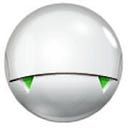The name of Next-generation Sequencing now is replaced by High-throughput sequencing
Several new methods for DNA sequencing were developed in the mid to late 1990s and were implemented in commercial DNA sequencers by the year 2000. Together these were called the “next-generation” or “second-generation” sequencing (NGS) methods, in order to distinguish them from the aforementioned earlier methods, like Sanger Sequencing. In contrast to the first generation of sequencing, NGS technology is typically characterized by being highly scalable, allowing the entire genome to be sequenced at once. Usually, this is accomplished by fragmenting the genome into small pieces, randomly sampling for a fragment, and sequencing it using one of a variety of technologies, such as those described below. An entire genome is possible because multiple fragments are sequenced at once (giving it the name “massively parallel” sequencing) in an automated process.
Jonathan Rothberg is the inventor of this method, this is a talk he gives recently:
This article is a specific introduction to how Jonathan Rothberg invent this method: Rothberg’s Recipe for Success
And Jonathan Rothberg’s latest startup astonish me, a :
In 2011, Dr. Jonathan Rothberg, inventor of high-speed “Next-Gen” DNA sequencing, decided it was time for a change. He assembled a team of the best scientists and engineers across multiple industries to solve what was thought to be an unsolvable problem.
Five years later, we put ultrasound on a chip and created the world’s first whole-body imager for less than $2,000. Every healthcare provider now has access to an intuitive, powerful, whole-body medical imaging system that fits in their pocket. A fusion of semiconductors, artificial intelligence, and cloud technology has made it possible to create a ubiquitous imaging solution that is clinically significant and category defining.
Just two weeks ago, Butterfly Network, the maker of a $2,000 handheld ultrasound device, has raised $250 million from large private investors. A source familiar with the deal says the fundraising values Butterfly at $1.25 billion.
The Butterfly iQ is the world’s first handheld whole-body imager. Built upon first of its kind technology that miniaturizes the traditional ultrasound system onto a single semiconductor chip, iQ is combined with a natively mobile-first, cloud-based software platform and AI assistance. The iQ is FDA-cleared and will be shipping to doctors and hospitals later this year.
